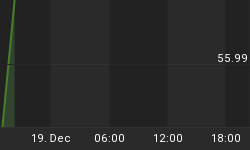In a world that has been reshaped by Twitter, 24-hour news networks and an endless war between media outlets for your attention and the ad dollars that come with it, it’s not surprising that news in the modern era errs toward sensationalism.
This sensationalism can have a tangible effect on how we as societies react and, as any oil trader knows, sentiment is frequently more powerful than fundamentals when it comes to moving markets. With that in mind, market observers should be particularly wary of the outsized impact that the Coronavirus has had on markets this year. While there has been tangible demand destruction from China’s countermeasures, the mass global hysteria that has been created by the spreading of multiple myths by different media outlets has, more likely than not, created unjustified bearish sentiment in markets.
Now, at this point, it is important to note that the aim of this article is not to downplay the seriousness of the epidemic or the deaths associated to it, but rather to put into perspective just how big a threat it is based on current information and to judge whether oil markets are overreacting as WTI prices fall back towards the $50 mark. While it may be a crude comparison, it’s worthwhile remembering that there have been 10,000 deaths in the U.S. from the flu this winter compared to only 638 confirmed deaths from the Coronavirus globally. The potential threat of the Coronavirus is undeniably worrying, but its current mortality rate is closer to influenza than SARS and it is yet to be declared a pandemic. China’s severe reaction and the demand destruction it has caused is entirely justifiable and likely the key reason that the epidemic has been kept within its borders. Experts such as Peter Piot warn against complacency and believe intensified international collaboration and more resources will be needed to stop this outbreak. But there is a vital difference between the duty and actions of governments and medical institutions (which should always tend towards worst case scenarios) and the public sentiment driven by sensationalist articles and anecdotal evidence.
From quarantining cities to canceling flights, China’s reaction to this epidemic has been unprecedented and, if we ignore the ethical dilemmas associated to it, has given the country the best possible chance to contain the disease. The resultant impact on oil demand due to the shutdown of factories and the drastic reduction of flights can certainly justify a significant drop in oil prices. But how low and for how long should oil prices fall?
The big question for energy market observers is whether the hysteria surrounding the Coronavirus has seeped over into oil demand forecasts and market sentiment. If China’s reaction has been effective and the epidemic dies out sooner than forecast, then it would not be unreasonable to expect Chinese oil demand to have fully recovered by the end of the year. That would make demand forecasts of a reduction of 0.5 percent in global oil demand throughout 2020 very bearish. Related: Last Chance To Buy Apple Before 2020 Run
Two major factors to be considered at the moment that most forecasts seem not to take into account is that 1) warmer weather will likely play its part in helping to kill off this virus and 2) the Coronavirus is not yet a pandemic and so the possibility remains that the worst of this epidemic will be contained within China.
The most important point here, however, is that forecasts and media reports are still based on data sets that are far from complete. Extrapolating data from early on in epidemics can lead to conclusions that are both problematic and inaccurate, and when combined with our current tendency towards sensationalism, can lead to mass hysteria. This extrapolation issue can be seen in the changing mortality figures that have been coming out of China since the disease was first reported. The first mortality rate to come out of Wuhan was 11 percent, a rate that has since dropped to 4.9 percent and one that, within China but outside of Hubei province is now 0.16 percent. The overall crude mortality rate of the disease according to WHO is currently 2 percent, a rate that could be lower due to unreported cases (or higher due to unreported deaths). At current rates, this disease appears to be much closer to Influenza than SARS, and with the Chinese government’s reaction having been far quicker and more effective this time around, there is reason to believe it has had an oversized impact on markets. The worst-case scenario is still very much a possibility, but if the Coronavirus is indeed contained and begins to regress, the change in tone from governments and medical institutions will likely cause a significant swing in sentiment.

















